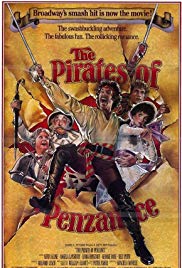One of the most humorous situations in this operetta occurs when Frederic (who was apprenticed to a band of pirates until his 21st “birthday”) is presented with a “paradox” by the Pirate King and Ruth. Frederic was born on February 29th in a leap year and technically his “birthday” occurred only every four years. In the “Paradox Song”, the Pirate King and Ruth convince Frederic that his contract of indenture requires him to be a pirate until he is 84 years old.
Ancient peoples used both lunar and solar calendars. Solar calendars had to be readjusted periodically because the year is approximately 365 and 1/4 days long. Over time, the dates tended to drift in relation to the seasons. Ancient Egypt was the first society known to extend the length of the year by one day every fourth year. Julius Caesar reformed a hopelessly complicated Roman Calendar which had been manipulated by corrupt office holders to extend the length of their terms of office. On the advice of astronomers, he introduced a leap year, extending February by one day every fourth year. But it turns out that the Julian Calendar, which is very close to our modern calendar, is about 11 minutes and 14 seconds longer than the solar year. Over several centuries people found that the seasons and the dates were again increasingly out of sync. By 1582 the vernal equinox was occurring ten days early. Pope Gregory II ordered eleven days dropped from the Calendar. Thus, September 2, 1582, was followed by September 14, 1582. Gregory II also ordered that in the future, century years that were divisible by 400 would have an additional day and would be leap years as they would normally be while all other century years would be common years without a leap day. The modifications, called the Gregorian Calendar or New Calendar, have now been adopted throughout most of the world.
In the 1700s and early 1800s in England (and America), children learned various trades, such as silversmithing, shoemaking or blacksmithing, by becoming an “apprentice” to a man who was an expert in the field. The child would receive food, lodging, and training in return for work. The child was said to be “indentured” to the master for a certain number of years. The indenture agreements were often in writing and frequently the term of the indenture was until the child’s 21st birthday.
In England, in the eighteenth and nineteenth centuries, the sense of duty was prized very highly and often taken to extremes. Gilbert and Sullivan spoof this situation in this operetta.
Victoria was Queen of England from 1837 to 1901, a reign of 64 years. She was immensely popular and the term “Victorian” has been used to apply to an era of “respectability” and strict public morality but questionable conduct behind the scenes.
Until the 20th century, the aristocracy in England was very cohesive and its loyalty to itself was often stronger than its loyalty to the rule of law, to the crown, or to the country. Gilbert and Sullivan ridicule this attitude when, at the end of the play, the Major General offers his daughters in marriage to the pirates when he is informed that they are “not members of the common throng. They are all noblemen who have gone wrong.”
The term “the bar of justice” or simply “the bar” can refer to bringing someone before a court on a criminal charge. In courthouses in England, there was a railing, called “the bar,” which separated the lawyers and the judge from the other people. It was said that you had to be “admitted to the bar” to be an attorney. This custom and terminology have been retained to some extent in the U.S. Our present-day courthouses still have railings that separate the people from the lawyers and the judge. It is still called “the bar,” and while we do not use the term to bring someone before “the bar of justice,” we do use the term “admitted to the bar” to refer to a person who has become a lawyer.


